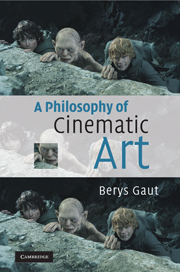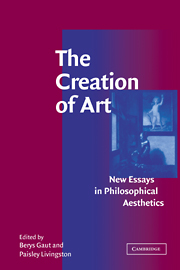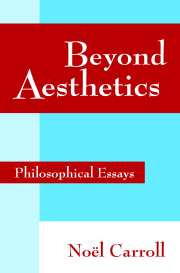A Philosophy of Cinematic Art
A Philosophy of Cinematic Art is a systematic study of cinema as an art form, showing how the medium conditions fundamental features of cinematic artworks. It discusses the status of cinema as an art form, whether there is a language of film, realism in cinema, cinematic authorship, intentionalist and constructivist theories of interpretation, cinematic narration, the role of emotions in responses to films, the possibility of identification with characters, and the nature of the cinematic medium. Groundbreaking in its coverage of a wide range of contemporary cinematic media, it analyses not only traditional photographic films, but also digital cinema, and a variety of interactive cinematic works, including videogames. Written in a clear and accessible style, the book examines the work of leading film theorists and philosophers of film, and develops a powerful framework with which to think about cinema as an art.
- Develops a comprehensive, philosophical theory of cinema, focusing on film as a medium
- Emphasises the contemporary relevance of issues traditionally linked to classical film theory, such as authorship, narration, realism and character-identification
- Offers a systematic investigation of central features of non-interactive and interactive digital cinema, from films to videogames to virtual reality displays
Reviews & endorsements
"… Berys Gaut's excellent new book … is a force to be reckoned with in the philosophy of cinema, a subfield of aesthetics that has recently seen a flurry of scholarly interest and publication … This accomplished book is essential in the library of anyone interested in the philosophy of cinema."
Carl Plantinga, Notre Dame Philosophical Reviews
"… Gaut … provides clarity in discourse and argumentation in this contribution to several ongoing issues in analytic philosophy's treatment of cinema … Recommended …"
D. W. Rothermel, Choice
"… [a] special feature of the book is the stress on recent developments like digital film and interactive films … a systematic and comprehensive introduction to key questions about cinema."
Manuel Bremer, Metapsychology
"… In its thorough and detailed examination of ideas and secondary literature relating to medium, authorship, transparency, narration, emotion, and fictional identification, this book is essential reading for students in aesthetics. For specialists in the field, the book significantly advances philosophical analysis of different technologies of the moving image and engages subtly with the emergence of new media within the genre …"
Kathryn Brown, Philosophy in Review
"… [one of] the most important publications on the topic … will provide theoretical groundwork for analytically inclined film students for a long time …"
Szilárd Orosz, Hungarian Journal of English and American Studies
Product details
March 2010Hardback
9780521822442
340 pages
235 × 155 × 20 mm
0.66kg
9 b/w illus.
Available
Table of Contents
- Introduction
- 1. The challenges to cinema as an art
- 2. Language and realism
- 3. Cinematic authorship
- 4. Understanding cinema
- 5. Cinematic narration
- 6. Emotion and identification
- 7. The role of the medium
- Bibliography
- Index.





